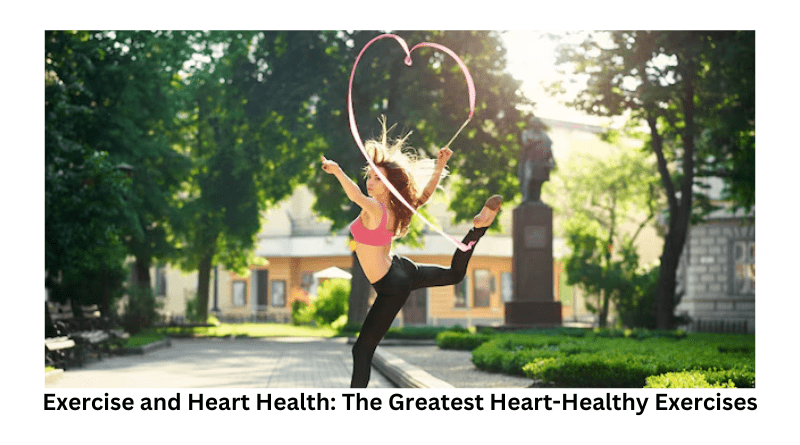Exercise and Heart Health: The Greatest Heart-Healthy Exercises
1.Strengthens the Heart Muscle: Consistent exercise makes the heart more capable of pumping blood, which eases the burden on the cardiovascular system.
2.Enhances Circulation: Exercise increases blood flow, which aids in the removal of waste materials from the body and the delivery of nutrients and oxygen to tissues.
3.Reduces Blood Pressure: Regular exercise can lower blood pressure by lowering the systolic and diastolic readings, which lowers the risk of hypertension.
4.Lowers Cholesterol Levels: Exercise helps prevent plaque accumulation in the arteries by increasing HDL (good cholesterol) and decreasing LDL (bad cholesterol).
5.Controls Weight: Exercise lowers the chance of obesity, a significant risk factor for heart disease, by assisting in the maintenance of a healthy weight.
Aerobic Exercise: The best activities for heart health are aerobic ones, also referred to as cardio. These activities promote oxygen consumption and raise your heart rate, which might result in exercise-induced tachycardia. Among the top aerobic workouts are:
Walking: For people of all fitness levels, walking is an accessible, low-impact workout. Five times a week, a vigorous 30-minute walk will greatly enhance heart health.
Running and jogging are higher-intensity activities that increase cardiac strength, circulation, and caloric expenditure. Every week, try to get in 75 minutes of intense exercise.
Cycling: Cycling improves cardiovascular fitness, strengthens the lower body, and may be an enjoyable kind of exercise, whether done outdoors or on a stationary cycle.
Strength Training: Also known as resistance training, strength training consists of workouts that increase general strength and muscular mass. Even while aerobic exercise is essential, there are more heart-healthy advantages to including strength training in your regimen:
Weightlifting: Lifting weights promotes bone health, increases muscular mass, and reduces body fat. At least twice a week, include weightlifting activities that target all of the major muscle groups.
Exercises Using Your Bodyweight: Effective strength-training activities that don’t require any special equipment include push-ups, squats, lunges, and planks. These workouts enhance metabolic health and muscular endurance, which benefits cardiac function.
Interval Training: This type of training alternates between high-intensity workouts and slower rest intervals. This kind of exercise is especially beneficial for heart health:
HIIT, or high-intensity interval training: Short bursts of intensive activity, such as cycling or sprinting, are usually interspersed with short recovery intervals in HIIT programs. HIIT can speed up fat burning, increase metabolism, and enhance cardiovascular fitness.
Circuit training is a type of interval training in which strength and aerobic activities are performed quickly one after the other with little to no recovery in between. It enhances endurance, strengthens the heart, and builds strength.
Flexibility and Balance Exercises:
While not directly linked to cardiovascular fitness, flexibility and balance exercises like yoga and tai chi support heart health by reducing stress, improving mental well-being, and preventing injury:
- Yoga: Yoga for heart health combines physical postures, breathing exercises, and meditation, promoting relaxation and reducing stress—a significant risk factor for heart disease.
- Tai Chi: This gentle martial art improves balance, reduces stress, and enhances cardiovascular function, making it ideal for people of all ages.
